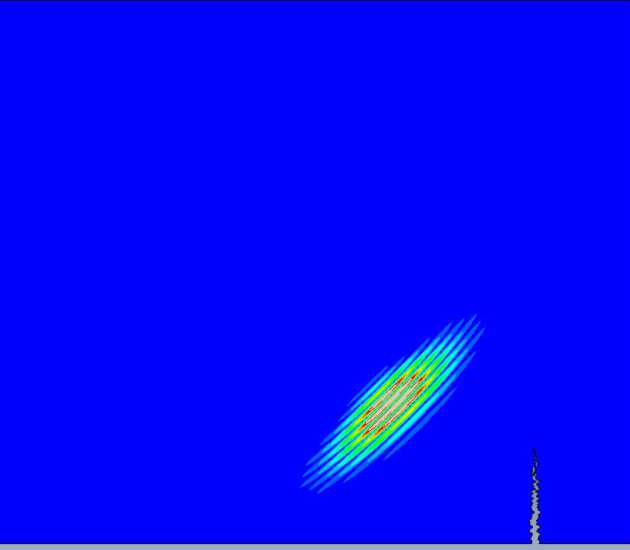Development of FE techniques for the ultrasonic inspection of surface-breaking defects
 Ultrasonic Non-Destructive Evaluation (NDE) techniques are paramount within the nuclear industry and provide a means to reaffirm the structural integrity of safety critical components. Despite the success of this approach, defects with complex morphology, such as rough or surface-breaking defects, prove to be more challenging to reliably size and detect. Consequently it has become commonplace within industry to take a pessimistic approach whereby reporting thresholds are made overly sensitive to guarantee defects will be detected with a high level of confidence. A side effect of this approach is that innocuous flaws are detected and often cannot be differentiated from complex defects, thus increasing the probability of unnecessary and costly component repairs.
Ultrasonic Non-Destructive Evaluation (NDE) techniques are paramount within the nuclear industry and provide a means to reaffirm the structural integrity of safety critical components. Despite the success of this approach, defects with complex morphology, such as rough or surface-breaking defects, prove to be more challenging to reliably size and detect. Consequently it has become commonplace within industry to take a pessimistic approach whereby reporting thresholds are made overly sensitive to guarantee defects will be detected with a high level of confidence. A side effect of this approach is that innocuous flaws are detected and often cannot be differentiated from complex defects, thus increasing the probability of unnecessary and costly component repairs.
At present semi-analytical models are used extensively to support the justification and development of inspections and to reduce the number of test pieces required for inspection qualification. However, in the case of increasingly complex defects, semi-analytical approaches breakdown and are unable to accurately and reliably model the ultrasonic interaction. The Finite Element Method (FEM) is a numerical modelling technique which is able to calculate a complete elastic solution to the scattering problem and is not subject to any of the limitations placed on semi-analytical models. Providing a reliable, accurate and efficient means to model this ultrasonic interaction will lead to less conservative, yet safe, means to characterise complex defects. This project aims to implement complex surface-breaking defects into an efficient FE-analytical hybrid model developed at Imperial College London, facilitate the transfer of the technology into an industrial environment and utilise this modelling technique to further current understanding of the interaction between an ultrasonic wave and defects with complex morphology.
Figure 1: A snapshot from a finite element model of an ultrasound wave propagating towards a surface breaking defect within a steel component. ABAQUS CAE was used to create this image (www.3ds.com).


